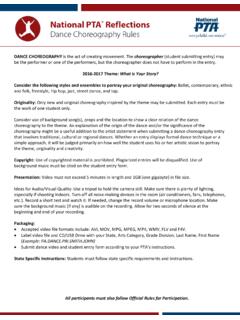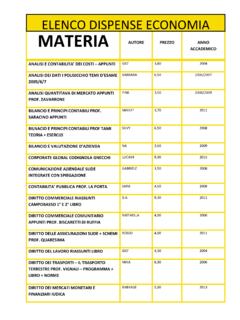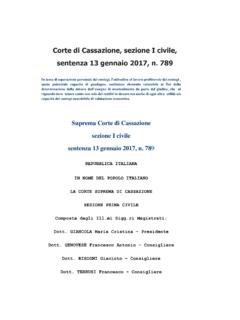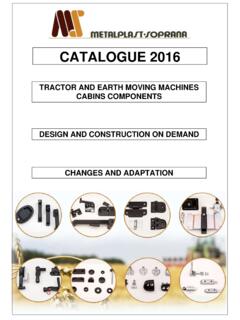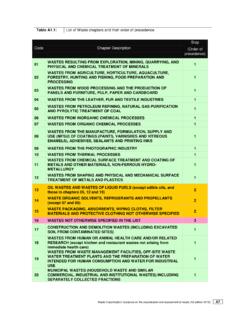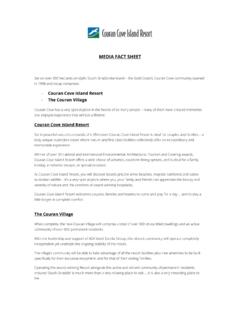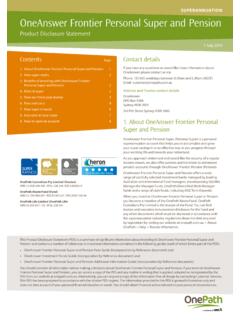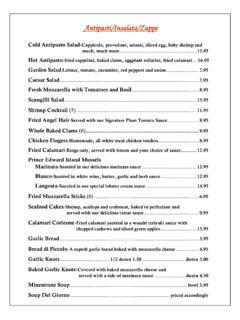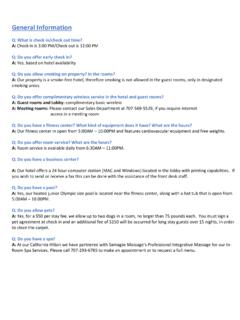Transcription of Family Dynamics - irp-cdn.multiscreensite.com
1 Family Dynamics All people require both a certain amount of structure and a modicum of cohesiveness in their lives. A number of studies have looked at the way families operate and interact. Olson s work was among the first and is still the most comprehensive. David Olson (1985; 1989; 2008; 2011) has looked at the function of families in terms of two different dimensions : Adaptability how families cope with changing circumstances, and Cohe s iveness how families operate and stick together. Too much or too little Adaptability or Cohesiveness can be problematic. Adaptability: Rigid vs. Chaotic [This was changed to Adaptation in later studies.]
2 ] Adaptability is a measure of the Family s ability to change with changing circumstances. Most families have roles (scripts, if you like) delineating how each Family member should behave, who has what responsibility, and who is in charge of what. Laid out along a spectrum, families are either: Rigid; Structured; Flexible; or Chaotic. The further a Family is from the centre, the less they are able to change and tend to react in dysfunctional ways. Ri gi d S tru ctu red Fl e xi bl e C h aoti c _____|_____ Dysfunction Fu n cti on al Dysfunction Rigidity Rigid families have very strict rules about conduct and behaviour.
3 Often both parents, but sometimes just one parent, is an autocrat and all decisions are referred to and punishments handed out by him/her. In some rigid families, other Family members may live in fear of the autocrat, and physical, but certainly emotional abuse is a possibility. In other families control is exercised by the withdrawal of love, or, in families which are also Enmeshed, by cloying sweetness ( Where has my sweet little boy/girl gone? ). Rigid homes tend to have a clinical look, with a place for everything and everything in its place. Meal times are usually, or exactly, at the same time every day, sometimes with a set menu for different days.
4 Meals may be eaten in silence, with only the parents speaking, or following a format set by the parents a conversation about a particular topic perhaps between the main and second courses. Occasionally, families may be rigid in emotional structure, but not visually so. Physical abuse is possible in such families. Most rigid families would not see themselves as rigid, but as traditional or structured. Most functional families have a preference for structure or flexibility and changing circumstances may bring about a temporary move along the continuum. Having house guests for a short time tends to move most families towards structure and children will be expected to do certain chores without having to be reminded.
5 Structure Structured families have a number of rules, but allow some flexibility within the boundaries of those rules. For example, most things are in particular places and the home looks clean and tidy, but in individua l rooms owners may express their individuality. Certain Family members may have certain roles, rubbish, cleaning, but sometimes these may be swapped or negotiated. Meal times tend to be fairly structured, but occasionally the Family may eat Pizzas on the floor in front of the TV. This kind of home is more harmonious if people generally stick to the structures in place. Flexibility Flexible families have a few rules and may allow negotiation on these, allowing for difference in ages.
6 However, there may be some structures or rules which are always adhered to, rules of hospitality involving visitors: rooms which may be untidy, but must be cleaned either regularly/occasiona lly, but basically harmony is seen as more important. There may be certain places for particular items, but such homes have a slightly messy lived-in look. Meal times may vary but there may be particular meals which are always eaten in a certain way, , Sunday lunch . Different Family members may take turns at doing different tasks, especially cooking favourite meals. Chaos Chaotic families, as the name implies, have few rules, or may change rules at a whim or mood of the parents.
7 Behaviour which may cause punishment to be enforced at one time could be overlooked at other times. Chaotic homes often look chaotic, as there is no set place for certain things. Meals may be at any time with different Family members eating different foods, grazing, or getting their own. Many families can become chaotic for a time if one parent, usually the mother, becomes very ill and no-one steps up. This chaos may be imposed by the long-term illness, or emotional dependence of a parent or child, or be inherited in that both parents came from homes like this and see that as normal. Neglect of children s physical and emotional needs is possible, especially if the Family is also extremely disengaged.
8 Sibling incest is possible in such families, because parental responsibility is limited; either or both parents may suffer from depression, or may be so involved in activities outside the home that what goes on in the home is not noticed. Cohesiveness: Enmeshed vs. Disengaged Cohesiveness is a measure of how close the members of a Family unit are; it is a measure of the emotional bonds towards or between each other. It looks at the boundaries between individua l members of the Family and the boundaries around the Family . For most families, there is a perceptible boundary which others recognize as a Family unit.
9 The boundary around and between individua ls : my rights, my space, my room, my body is another boundary. En m e sh e d C on n ected S e parated Di se n gaged _____|_____ Dysfunction Fu n cti on al Dysfunction Enmeshment Enmeshed families have diffuse boundaries between Family members. Family members usually know what each other are doing on a daily basis, and even as adults, are in daily phone or face-to-face contact. Personal pursuits usually need Family approval or discussion before being undertaken. Friends, especially boy/girlfriends need to meet with the Family s approval (this sometimes leads to running away with someone who is not approved of, if the Family decision is strongly against).
10 Visitors are entertained by the entire Family so that everyone can express an opinion about the visitor later. This kind of Family is characterised by a strong boundary around it. Statements like, We always/never .. in this Family , are common. The subtext, particularly in Rigidly Enmeshed families is, to remain in this Family , you must always/never do/be .. ). Individual members have, and may seek, little personal privacy but the Family may keep itself private. Children would be expected to pursue a career directed by the parents, and, particularly if the Family was also rigid, parents would make the decision about how much education the child received.
